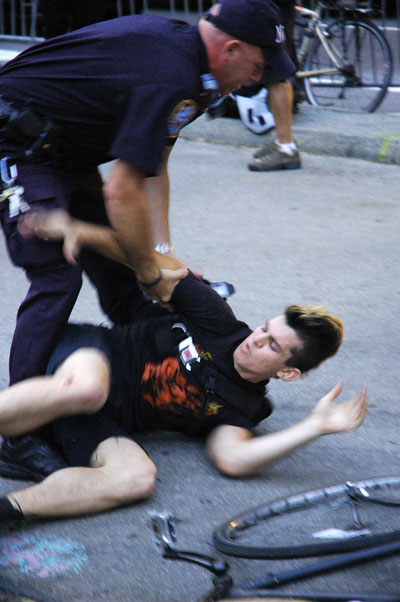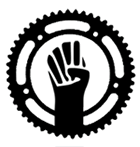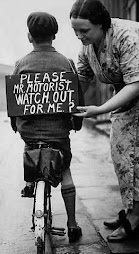
Thursday, September 25, 2008
Saturday, September 13, 2008
Memphis Cyclists Claim Police Brutality On Beale Street - Video
Why is it that it seem like it is always us against them and vice versa? Let's thank the antagonist from the staff and management of Rum Boogie Cafe. That jerk deserves a real pat on the back. Especially with his convenient blanket statement during this segment that we cyclists ride through Beale Street chasing kids and causing chaos. Does this jerk think that's what adults on bicycles do? What an ass? I certainly will not ever patronize that cafe again. Let's boycott Beale Street and especially Rum Boogie Cafe.
Sunday, September 7, 2008
Getting trail wary: Critics and supporters of rails-to-trail plan have questions as development nears

By Michael Kelley (Contact), Memphis Commercial Appeal Sunday, September 7, 2008
Development of a running-cycling trail from Midtown to Shelby Farms and beyond has been such an elusive goal for so many years that recent progress has left Shelby County government feeling like the dog that caught the car.
Very soon, decisions will have to be made about what to do with the thing.
Shelby County, with Mayor A C Wharton leading the charge, is responsible for turning the long-time dream of a multi-use, cross-town trail into a reality.
The dream will come true along an idle CSX Corporation railroad right-of-way that stretches for 13 miles from the Poplar and Union viaduct to a point near Houston Levee Road.
The private group Memphis Community Connector has agreed to purchase rights to a section of the right-of-way that runs from the viaduct to the north edge of Shelby Farms Park.
The $5 million sale is expected to be completed within the next three months, at which time county officials are expected to begin some in-house preliminary design work running up to a formal search for a project designer, developer and manager.
So far, the project has been financed by private money.
It's not clear if and when public funds will kick in, but the development has left Memphis' rapidly growing cycling and running communities more hopeful than ever. They've been lusting for years for an unimpeded, no-motorized-vehicles, multi-use trail that would connect Midtown to Shelby Farms Park and every neighborhood in between.
What's creating ecstasy among runners and cyclists, however, is making people nervous in neighborhoods along the trail's route, where CSX has been busily removing tracks and ties in the last few weeks.
That's not surprising. Anxiety has been the mood surrounding virtually every one of the 1,534 open rails-to-trails projects that stretch out across 15,346 miles of America's exercise highway. There is no reason Memphis should be any different.
An announcement of the preliminary purchase agreement just over a week ago stimulated a lively debate among residents over trail issues ranging from "Who's going to cut all the kudzu?" to "Cutting all that kudzu's just going to give burglars easier access to my backyard."
There is a lot of skepticism about national studies that have found positive effects on property values when trails are blazed through urban neighborhoods.
A typical study, conducted eight years ago along what was then a 67-mile system of trails in Omaha, Neb., found 65 percent of the nearby residents confident that the trails made their homes easier to sell and 77 percent believing that the trail enhanced their quality of life.
So what, the skeptics say. Maybe real estate agents are giving tours from the seats of their bicycles in Boulder. But Memphis?
"We really don't want the trail here in High Point Terrace," said Mary Alice Inzer, a vocal opponent of the CSX trail who lives a few blocks north of the right-of-way. "It would just be another inlet for criminals. I think it would open up this area to an undesirable element."
Inzer looks back with more than a little doubt on a community meeting at which trail advocates predicted higher property values and lower crime rates for her neighborhood.
"You know, in these Power Point presentations they're only going to express the point that they wish to endorse," she said. "They're not going to tell you the negatives."
The project has allies in the neighborhood, as well. Carol Stout, whose backyard abuts the south side of the right-of-way in High Point Terrace, is looking forward to the day the trail opens.
"I'd like Memphis to be in step with Dallas and all these other places that have trails," she said. "It would help the city tremendously."
It's not so much that her neighbors are overwhelmingly against the plan, Stout said. But many have questions. Will the trail have police officers on bicycles like those you see on big-city trails? Will it be lighted at night? Will its elevation be lowered to block views into people's backyards?
To the west of High Point Terrace and on the south side of the railway, the Poplar-Highland Community Association is "strongly in favor of the old CSX railway being converted into a trail for bikes and walkers-runners, as long as the trail is maintained," said president James Stubbs.
That means cutting the grass, picking up the litter, making sure trees and bushes are not allowed to grow out of control and the kudzu is eliminated, "and there is some guarantee of safety on the trail, especially on the section in our area," Stubbs said.
All along the trail's path, in fact, from Binghamton on the north bank of its western sector to the leafy affluence of East Memphis, there is guarded support but also many questions about what the trail will look like, how it will be maintained, how it will be lighted and what the police presence will be.
Advocates at Memphis Community Connector and Greater Memphis Greenline expect to be able to answer those questions in time. There is little doubt, however, that when planning for the trail begins there should be vigorous efforts to engage the public in the process.
"Residents of the neighborhoods can get involved early by participating in decisions about the trail itself -- seating areas, recreational areas and the like," said Katie Test, manager of public relations for the national Rails-to-Trails Conservancy. "Promoters should encourage members of the community to have meetings around the trail design. They'll also become more comfortable as they see the same people on a regular basis -- walking their dogs, running, etc.
"Some neighborhoods have developed trail ranger programs with volunteers to keep an eye on things. Trails need solid friends groups. They can help with maintenance, light installation, brush clearing and other tasks."
If the history of Memphis' only other rails-to-trails project, the 10-year-old V&E Greenline in Midtown, is an accurate predictor, a lot of change will come to neighborhoods along the route.
Renate Rosenthal, whose home abuts the 1.7-mile V&E, was "highly skeptical" about the project when the right-of-way was purchased by the Vollentine & Evergreen Community Development Corporation in 1996.
When the line was abandoned in the early '80s, she said, the path became a dumping ground for tires and building materials, and vagrants moved in. They climbed over people's fences, stole lawn mowers and started fires.
"They used a stolen ladder from my house to climb over the fence and steal more. They were brazen," she said. "One of their fires spread to my backyard. Someone was back there throwing cigarettes down."
Neighbors communicated little about crime or anything else. "People came out saying we've had this problem and it's just going to get worse," Rosenthal said.
But the trail was built, and after 10 years it is getting steady use by neighborhood dog walkers, Midtown runners and people simply looking for a nice place to take a stroll. Trees, brush and tall fences obscure most of the backyards.
A committee of the Vollintine-Evergreen Community Association is in charge of the trail. Its chairman is Rosenthal, the former skeptic, who says the neighborhood is united more than ever now, and not just by a trail.
With the trail, she says, has come a new commitment among neighbors to communicate and work together to make sure the trail is more of an asset than a liability.
"The trail has become a catalyst for neighbors to talk about what is going on in our backyards," Rosenthal said. "When it was first cleaned up, there continued to be a concern about what was it going to do now that it's open. Will things get better? Will things get worse? There continued to be sporadic issues about people coming in over the fences.
"That was nothing new. But we became much more aware of it. We talked to each other about it. There was a core of about 15 people, and then various groups of volunteers at different times would show up.
"There was a committee that oversaw planning and development and one for day-to-day things. 'There's a fallen tree. Who can come with a chain saw?' People started to notice things.
"The neighborhood became like a family -- everybody up and down the green talking to each other."
There are still people in the neighborhood who don't care much for the greenline, Rosenthal said, and people who won't venture onto it alone. There are areas along the trail that can feel isolated at certain times of day and night.
The trail along the old CSX line will be no different. Some people will use it, and some won't. It would be futile to expect unanimity of support in neighborhoods that lie along the path.
For a lot of people the trail will be a dream come true. Hopefully, it won't be anybody's nightmare.
Michael Kelley is an editorial writer for The Commercial Appeal. Contact him at 529-2785.
Saturday, September 6, 2008
Bicyclist Attacked By Memphis Police Officer

Last night I saw a bicycle rider attacked by a police officer.
Around 11:30 p.m., a group of riders headed south on Second Street to the intersection of Second and Beale. With foot traffic very light and no police prohibition at the edge of Beale, the riders rode down Beale to Third Street. Upon seeing further bike traffic as prohibited, the riders turned to head south to bypass the busy section of Beale St. When the cyclists reached Third and Beale, a police officer turned and began waving his arms. To avoid the policeman, who would have otherwise been struck by the bicycles, riders headed south on Third up the sidewalk.
After six riders passed the officer, he became angry. As the seventh rider passed the officer, the policeman grabbed the cyclist by the shoulder and threw him to the ground. Shocked, I slowed to a stop, worried my friend had broken his arm. When my friend pulled himself from the concrete, the officer stepped as close as he could to my friend, who was now bleeding, and screamed into his face: “Didn’t I tell you to stop?”
Officer Woodward, badge number 842, had the number “06” pinned to his lapel. After the officer ceased yelling, I asked the him if we were free to go. “You are!” he screamed. “But not your friend! He’s getting a citation!” And after a moment’s pause, he screamed “You’re all getting citations! For hanging around!” We calmly replied that we were concerned that our friend was injured, to which the officer said nothing. After 30 minutes, my friend who was assaulted by a police officer and the three of us that stayed around to be sure he was alright ended up with tickets.
While we waited, three eyewitnesses offered their phone numbers to us and offered to testify against the police in a court of law. Our court date is set for the 21 of October at 1:30 p.m.
The citation reads that we had been warned many times before, and had been seen on Beale riding bicycles before. I have never once been warned about riding bikes on Beale St., and had never in my life seen any of the police officers on duty that night. The police report was falsified.
This type of un-checked violence from police to citizens is not new. This summer, a transgendered woman was assaulted by local police inside a police precinct, and security forces on Beale have been in the news repeatedly for using excessive force.
In court, we will challenge the charges. We are now investigating a suit against the city for assault and excessive force. Our friend almost broke his arm, and whether it is right or wrong that bicycles are not allowed on Beale St., violation of a pedestrian or bicycle law does not warrant violent force to subdue citizens.
On Saturday, September 27, a ride will leave from Revolutions Community Bicycle Shop at First Congregational Church and proceed to Beale Street. We will dismount from our bicycles and walk the entire length of Beale St.
Please forward this message along to interested parties. For more information or to share similar stories, please contact Anthony Siracusa: 901.949.1201 or sirac@rhodes.edu
Monday, September 1, 2008
Life Cycles: Road safety responsibility of cyclists too
 By Anthony Siracusa, Memphis Commercial Appeal
By Anthony Siracusa, Memphis Commercial AppealMonday, September 1, 2008
Scott Wilson has been commuting by bicycle in Memphis since 2003.
On July 19, Scott left his job at Spindini restaurant around 1:30 a.m. He glided down South Main toward the intersection of Vance and Main, when suddenly, a car slammed into his right side. The car had run a stop sign.
Though some eyewitnesses reported seeing a beer bottle in the car, the responding officer chastised Wilson for requesting a Breathalyzer test for the driver.The final police report stated that the driver was charged with not yielding at a stop sign and driving without insurance.
There is no Tennessee ordinance that speaks plainly to what happens when a bicyclist is struck by a car.
The Tennessee Bicycle Protection Act of 2007 protects cyclists when passed by a car, stating that a car "shall leave a safe distance ... of not less than 3 feet and shall maintain the clearance until safely past the overtaken bicycle."
The law in Tennessee says bicycles are entitled to the same rights and responsibilities as a motor vehicle, but three colleagues on bikes have been hit by cars in the past month, causing some in the cycling community to feel that bicycles are not treated as vehicles in such situations.
Danny Fagden, a cyclist of 30 years, was seriously injured after being struck by a car on July 3.
For officers investigating the scene of such accidents, without laws specifically governing a collision between cars and bicycles in the roadway, determining fault and appropriate citation within a legal framework is difficult.
Cyclists do not ride for health, fitness, recreation and transportation more often because they do not feel safe or protected in the road. A lack of laws and understanding among officials only heightens the lack of protection for bicyclists.
Safety is the number one factor in whether people will ride bicycles, and maintaining roadway safety is a two-way street. More than 70 percent of bike-car collisions result from unsafe bicycle riding.
A gap in education and awareness for cars and bicycles exists in Tennessee, and this is reflected in Tennessee law governing bicycles.
When a cyclist is at fault in a crash, a class on safe road sharing between bikes and cars should be required.
The same should be true when a car is at fault.
With more bikes on the road than ever before, safely sharing the road must become a priority.
Your turn
Got a comment for cyclist Anthony Sircusa? Have something to say about biking in Memphis? Do you commute by bicycle to work? Share your story.
Go to our Healthy Memphis blog at commercialappeal.com/healthblog and join the conversation.
Memphian Anthony Siracusa is a student at Rhodes College, a member of Memphis' Bicycle Pedestrian Advisory Committee, executive director of Revolutions Community Bicycle Shop and a daily cycling commuter. Contact him at revolutionsmemphis.com.









